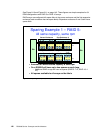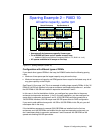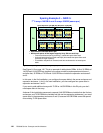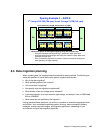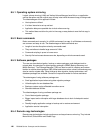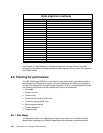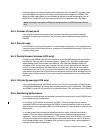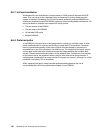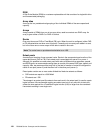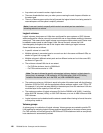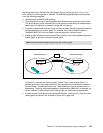150 DS6000 Series: Concepts and Architecture
8.6.7 Hot spot avoidance
Workload activity concentrated on a limited number of RAID ranks will saturate the RAID
ranks. This may result in poor response times, so balancing I/O activity across any disk
system is important. Spreading your I/O activity evenly across the available DS6000s will
enable you to optimally exploit the DS6000 resources, thus providing better performance. I/O
activity attributes to consider are to spread I/O activity across:
The two servers of the DS6000
The two loops of the DS6000
All available RAID ranks
Multiple DS6000s
8.6.8 Preferred paths
In the DS6000, host ports have a fixed assignment to a server (or controller card). In other
words, preferred paths to a server avoid having to cross the PCI-X connection. Therefore,
there is a performance penalty if data from a logical volume managed by one server is
accessed from a port that is located on the other server. The request for the logical volume
and the data would have to be transferred across the bridge interface that connects both
servers. These transfers add some latency to the response time. Furthermore, this interface
is also used to mirror the persistent memory and for other inter-server communication. It
could become a bottleneck if too many normal I/O requests ran across it, although it is a high
bandwidth, low latency, PCI-X connection.
When assigning host ports, always consider preferred pathing because the use of
non-preferred paths will have a performance impact on your DS6000.



